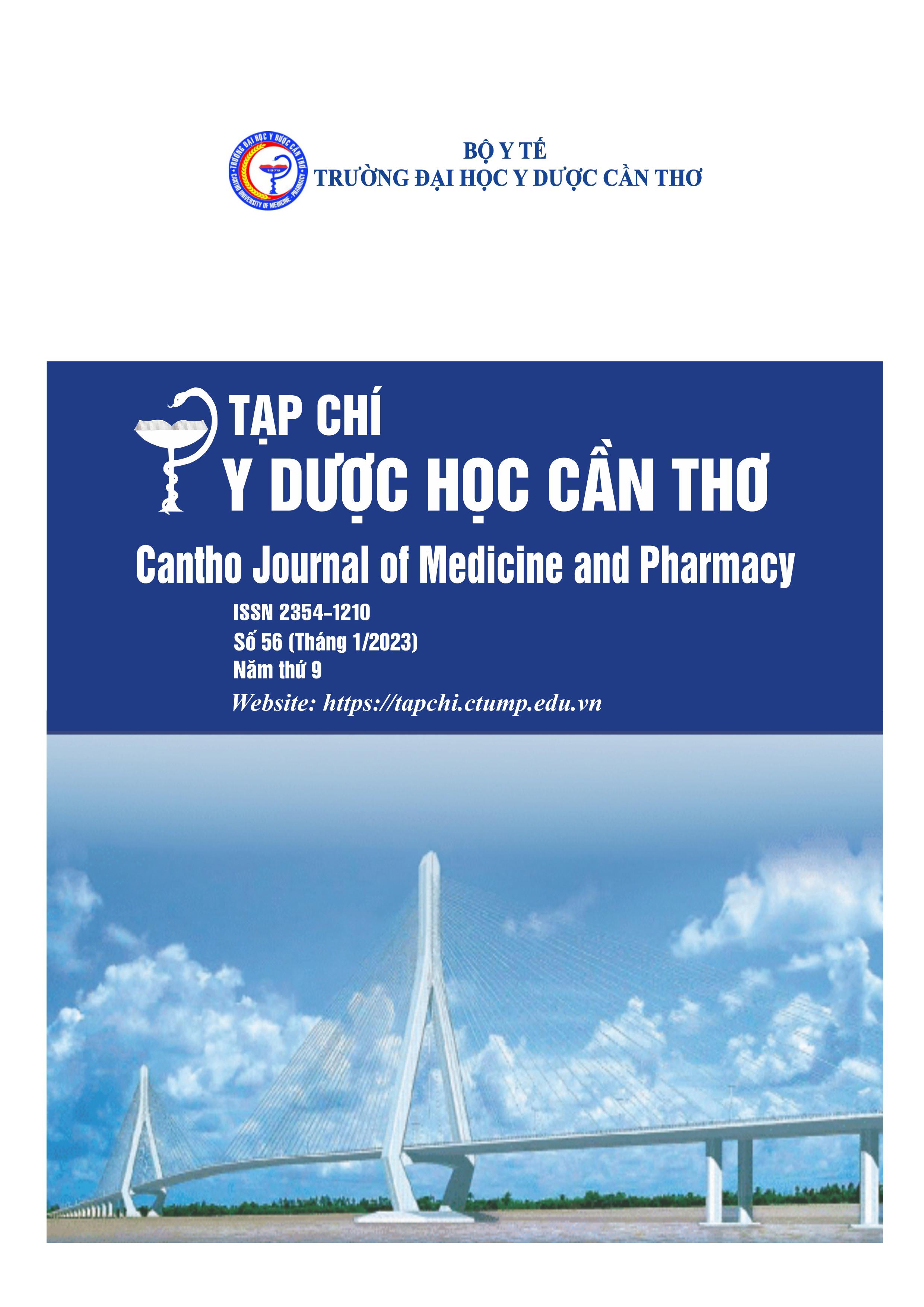A SURVEY ON MICROMINERAL DEFICIENCY AND SOME RELATED FACTORS IN MALNOURISHED CHILDREN UNDER 5 YEARS OLD AT CAN THO CHILDREN’S HOSPITAL IN 2021-2022
Main Article Content
Abstract
Background: Chronic micromineral deficiency closely relates to child malnutrition. Objective: 1) To determine the level of malnutrition and micronutrient deficiency of children under 5 years old at Can Tho Children’s Hospital; 2). To evaluate some related factors and micronutrient deficiency status of malnourished children under 5 years old. Material and methods: A cross-sectional descriptive study was conducted on 143 children under 5 years old who met the criteria from 2021 to 2022. Results: The rate of malnutrition in boys is higher than that of girls. The age group with the highest proportion is 1-3 years old. In the group of children studied, the rate of malnourished children with low weight for age accounted for 62.9%, and the rate of malnourished children with stunting accounted for 55.9%. The rate of malnourished children with zinc deficiency accounted for 82.3, followed by iron for 51% and finnaly calcium for 42.1%. Those who are exclusively breastfed for less than 6 months have a higher rate of calcium reduction than those who are exclusively breastfed for more than 6 months. Children who are introduced to solid foods at 6 months have a lower rate of calcium reduction than children who do not eat solid foods at 6 months. Compared with children who were exposed to the sun from 3 to 6 months, those who were not exposed to sunlight. Conclusion: Maternal micronutrient supplementation during pregnancy and lactation, time of exclusive breastfeeding, time of weaning, and time of children being exposed to the sun are related to micronutrient deficiencies in children.
Article Details
Keywords
Micronutrient deficiency, malnourished children, children under 5 years old
References
2. Viện dinh dưỡng quốc gia (2014), "Thiếu vitamin D ở trẻ em".
3. Trần Xuân Huyền (2013), Nghiên cứu tình hình suy dinh dưỡng của trẻ dưới 5 tuổi và các yếu tố liên quan tại thành phố Cần Thơ năm 2013., Luận văn thạc sĩ, Trường Đại học Y dược Cần Thơ.
4. Lê Bạch Mai (2019), "Tình trạng suy dinh dưỡng ở trẻ em Việt Nam hiện nay", Cổng Thông tin điện tử ngành y tế Thành Phố Hồ Chí Minh
5. Nguyễn Văn Long Nguyễn Thị Hồng Nhân (2017), Mối liên quan giữa thiếu máu thiếu sắt và tình trạng mắc bệnh viêm phổi ở trẻ em dưới 5 tuổi được khám và điều trị tại bệnh viện đa khoa Xanh Pôn năm 2017.
6. Phạm Nguyễn Kim Tuyền (2016), "Nghiên cứu tình trạng thiếu kẽm và các yếu tố liên quan ở trẻ dưới 5 tuổi đến khám tại khoa khám bệnh viện nhi đồng Cần Thơ".
7. Dias Cacilda Rosa Barbosa, Leite Heitor Pons, Nogueira Paulo Cesar Koch, et al (2013), "Ionized hypocalcemia is an early event and is associated with organ dysfunction in children admitted to the intensive care unit", Journal of Critical Care, 28(5), pp. 810-815.
8. Mellanby E (1991), An experimental investigation on rickets, pp. 407–412.
9. Maxfield Luke, Shukla Samarth và Crane Jonathan S (2021), "Zinc deficiency", StatPearls [Internet], StatPearls Publishing.
10. World Health Organization Ambition and action in nutrition 2016-2025.


